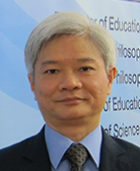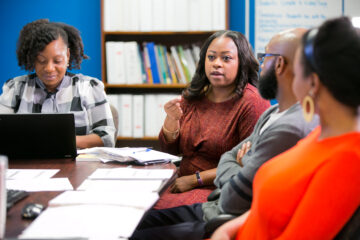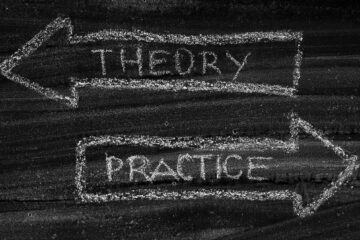As U.S. teachers increasingly pursue professional learning opportunities beyond the traditional lecture or workshop, some teachers have begun welcoming peers into their classrooms to observe. But teaching is an intensely personal profession, and lesson observations – even when conducted by peers whose aim is to learn – can feel evaluative.
Parallel Lessons, coordinated by the Centre for Educational Leadership at the University of Hong Kong since 2001, offers one example of how high-performing systems create opportunities for teachers to observe, discuss, and learn from other’s practice in supportive, non-evaluative environments. Parallel Lessons also bring the practice of benchmarking, or learning from high-performing systems, into the classroom.
Parallel Lessons were introduced to help teachers examine their own teaching practice more closely by emphasizing contrasts between lessons in different education systems. In addition to teachers, Parallel Lessons bring together teams from each education system, which include school leaders and teacher colleagues from both participating schools as well as other stakeholders in the education community.
The Centre for Educational Leadership describes Parallel Lessons as a professional learning opportunity in which “teachers of two different educational systems design and teach a lesson independently on a common topic to their own class of students.” The two teachers observe each other teaching these lessons and then debrief with each other and additional observers about how the lessons were taught. The debrief discussion follows a protocol that ensures all observers have a chance to participate, but is flexible enough to allow for open discussion: the two teachers speak first, followed by teacher colleagues, and finally other observers, such as subject specialists, school administrators, or university representatives.
 While Parallel Lessons bear some similarities to other types of lesson observation, they are unique in at least three ways. First, they create an opportunity for mutual, rather than one-sided, teacher observation. Second, they intentionally pair teachers from Hong Kong with teachers from very different education systems, such as those in mainland China or Singapore, to conduct these mutual observations. The two teachers observe each other teaching their same-topic lessons via video conferencing. Third, Parallel Lessons include a range of stakeholders in the education community. In addition to the two teachers, other teachers, administrators, and outside experts participate in the lesson observations and subsequent group debrief.
While Parallel Lessons bear some similarities to other types of lesson observation, they are unique in at least three ways. First, they create an opportunity for mutual, rather than one-sided, teacher observation. Second, they intentionally pair teachers from Hong Kong with teachers from very different education systems, such as those in mainland China or Singapore, to conduct these mutual observations. The two teachers observe each other teaching their same-topic lessons via video conferencing. Third, Parallel Lessons include a range of stakeholders in the education community. In addition to the two teachers, other teachers, administrators, and outside experts participate in the lesson observations and subsequent group debrief.
The debrief is not evaluative, which encourages an honest discussion among stakeholders with diverse viewpoints. The debrief is also not designed to identify the strongest elements of each lesson to be copied across systems. Instead, its purpose is to encourage reflection on teacher and system values and assumptions, as revealed in the contrast between lessons. For this reason, Parallel Lessons are not conducted between teachers in the same education system, as when they are there is a tendency to focus on minor, technical differences between the teachers’ styles rather than broad contrasts in underlying beliefs and approaches.
While Parallel Lesson participation initially required teachers to travel to each other’s schools, today schools participate online free of charge, using only the technology necessary for video conferencing. In this way, Parallel Lessons eliminate many of the logistical challenges and expenses associated with school visits – particularly international school visits – which may otherwise limit participation in this type of professional development.
In November of 2017, I was part of a team sent by NCEE to observe a Parallel Lesson conducted by teachers in Hong Kong and Shenzhen, a fast-growing city just across the border with mainland China. The common topic of the lessons was cross-sections of geometric shapes. The observations and debrief took place over the course of approximately three hours, further evidence of the commitment to professional learning in both education systems.
The Hong Kong-based lesson began with chairs arranged into small groups. Students were already familiar with the concept of a cross-section of a geometric shape, and students worked in groups using sets of blocks to create four shapes and draw the cross-sections of each. Then the class shifted into a circle, and student volunteers demonstrated how to create uniform cross-sections from different three-dimensional paper shapes; students were encouraged to reflect on their classmates’ creations and explain whether or not the cross-sections were uniform. The teacher helped students understand and use the mathematical term “uniform” by making a connection to students’ identical school uniforms. By the end of the lesson, students were able to make statements such as: “This triangular prism has two triangular bases, so you can cut a uniform triangular cross-section.”
In the Shenzhen-based lesson, students were also seated in small groups. The teacher began by cutting an orange in half to reinforce the definition of a cross-section. To develop a hands-on understanding of the concept, students cut sausages into different cross-sections by cutting from different angles and explained their work to the class. Then students applied their knowledge to conceptual questions, such as whether it is possible to cut given two-dimensional shapes from three-dimensional shapes (e.g., a pentagon from a cube) and how to identify the original shape based on a shape’s cross-section. When asked by the teacher at the end of the lesson what they had learned, students responded with an emphasis on the process: “If we want to learn math, we must have an assumption first and then find evidence to support it.”
Both lessons demonstrated a high level of rigor, an emphasis on student engagement and experimentation, and attention to the use of technical vocabulary. The subsequent debrief identified these common elements as well as contrasts that emerged in areas such as: teaching objectives; student activity, participation, and experimentation; and lesson flow. The group drew on their knowledge from observing previous lessons as well as the one that day. While other stakeholders – such as administrators and outside experts – participated in the debrief and provided input, the conversation was primarily conducted by the teachers; the teachers spoke first and had the opportunity to reflect on their own teaching and that of their peers. The debrief served as a high-quality professional learning experience, incorporating multiple perspectives into a discussion of teaching and comparison of teaching cultures.
Dr. H.M. Ng, former Director of the Centre for Educational Leadership at The University of Hong Kong, who has facilitated and participated in Parallel Lessons for 17 years, describes the process as an opportunity for a “paradigm shift.” Indeed, Parallel Lessons facilitate a fundamental shift in thinking; they use a comparative method to help teachers deeply examine their own practice through the lens of another education system’s philosophy and approach. Teachers explore their own hidden values and assumptions and begin to question how or why they have developed. Even before the Parallel Lesson debrief we observed had ended, teachers had begun to raise questions: How can student experimentation become the backbone of lesson design? What is the role of the teacher in guiding open-ended student discussion? These questions represent a shift in thinking and the first step in teacher-directed growth.
This growth can continue outside the Parallel Lessons themselves, because in Hong Kong as well as in other participating jurisdictions – such as mainland China and Singapore – Parallel Lessons complement a robust system of collaborative teacher professional learning. In the Parallel Lesson debrief we observed, some of the most insightful and thought-provoking reflections came from the teachers’ colleagues. Because of the organization of schools and teachers’ work in these countries, these types of conversations are likely to continue in the school environment, within existing structures for collaborative professional learning or in more informal discussions. For example, one teacher described how feedback received during the Parallel Lesson would help guide his lesson revision, and this process could become the basis for school-based collaborative lesson planning. In this way, Parallel Lessons empower teachers as leaders – both across education systems and within their own schools.






